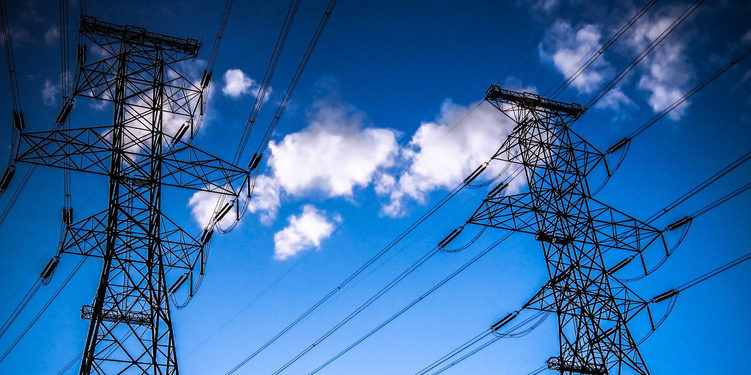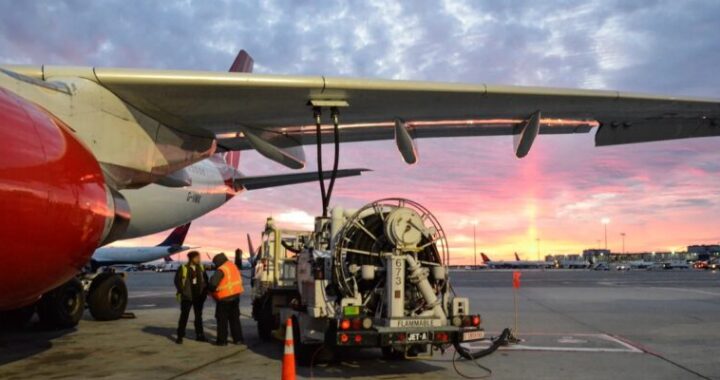South Africa’s energy crisis and government’s power pipe dream

The energy crisis in South Africa has negatively affected the country’s economy, especially its most industrialized industry – the mining sector.
To ensure continued economic activity beyond the power grid, the government, power producers, and mining companies are working collectively to find sustainable solutions to address the country’s energy crisis. HLENGIWE MOTAUNG reports.
As global temperatures continue to warm, additional sea level rise is inevitable. How much and by when depends mostly on the future rate of greenhouse gas emissions.
South Africa has topped the rest of Africa’s big carbon emitters, with 471.6 MtC emitted in 2019. To meet the country’s Nationally Determined Contribution, which sets out its climate change mitigation plans, South Africa must ensure its GHG emissions peak by 2025 and quickly decline to between 350 Mt and 420 Mt by 2030, and approach net-zero emissions by 2050.
To prepare South Africa for the structural transition to a climate-resilient economy, government proposes to progressively increase the carbon price every year by at least $1 to reach $20/t of CO2e by 2026.
For the second phase of the tax, government intends to increase the carbon price more rapidly, reaching $30/t of CO2e by 2030, accelerating higher every few years to reach up to $120/t of CO2e by 2050.
To encourage investments in carbon offset projects, the government intends to increase the carbon offset allowance by 5% from January 1, 2026.
The South African Treasury deems the Carbon Tax integral to lowering emissions and maintaining competitiveness since the exports of carbon-intensive products such as iron and steel will likely face carbon taxes in Europe.
“There is already a large international IRP processes for certain materials and metals where the South African market has been excluded, and that is a big red flag for a lot of producers of these goods.
South Africa has a carbon-intensive generation and that is starting to have impacts on procurement decisions internationally and that is something we need to be extremely attuned to, “states Jonathan Skeen, Executive Director at ENERGJ.
The World Bank’s High Level Commission on Carbon Prices recommends carbon prices of $40/t to $80/t by 2025 and $50/t to $100/t by 2030.
The International Monetary Fund recommends lower minimum carbon prices for developing countries of $25/t to $50/t by 2030 to achieve the Paris climate goals.
South Africa’s Finance Minister Enoch Gondongwana has urged all companies that have not already done so to develop plans for progressively reducing emissions over the next ten years or face steep taxes in the future – a challenge to its energy crisis.
Wheeling
Against the backdrop of Eskom’s gradual unbundling of power generation, transmission, and distribution to mitigate the energy crisis, and a surge in the uptake of renewable energy, wheeling is increasingly being viewed as a feasible, scalable solution to the energy shortfalls in South Africa.
Wheeling is the act of transporting electricity from a generator to a remotely located end-user using an existing distribution or transmission system. This may also be across multiple different distribution networks, such as through Eskom to a municipality.
However, as it stands, Eskom indicates that the overall transmission network performance has deteriorated and requires capital for replacement in many areas.
Eskom has a 10-year transmission refurbishment plan in place based on asset condition assessments, asset criticality and network risks. The new (TDP) 2022 will require new transition infrastructure over 14 218 km between 2023 and 2032.
Studies such as Eskom’s Transmission Generation Connection Capacity Assessment 2024 (GCCA 2024) report note that issues of the grid are a challenge to address in the medium term.
The latest report notes that the limiting factor for connecting new generation is that the areas with the best solar or wind resources lack connection infrastructure.
This is primarily the Greater Cape area comprising the Western Cape, Northern Cape, and Eastern Cape networks that require “substantial upstream network strengthening to facilitate new generation capacity”.
It concludes that: The IRP 2019 capacity in its current form cannot be connected in those areas in the medium term. Therefore, transmission development projects need to be expedited to unlock potential generation initiatives.
While various mining companies are starting to set up decarbonizing technologies that are coming into the market, i.e. renewables, Skeen points out that IPPs and off-takers need system flexibility to cope with many variable renewables.
On the other hand, Steen says that “there is a strategic view that buyers need to take that goes beyond the technologies themselves”.
Energy crisis: Closing the power gap
In mitigation of the accelerating and looming crisis, the South African government has drawn up a Just Energy Transition Investment Plan (JET IP) for the five-year period.
The JET IP 2023–2027 sets out the scale of need and the investments required to support the decarbonization commitments made by the government of South Africa and the governments of France, Germany, the United Kingdom, the United States, and the European Union (forming the International Partners Group (IPG) at COP26).
In the context of the JET IP’s identified scale of need for investment in the priority sectors of Electricity, New Energy Vehicles (NEVs), and Green Hydrogen (GH2), the JET IP outlines how the IPG pledge of US$8.5 billion will be allocated to these priorities in South Africa over five years, of which US$6.9 billion will be allocated to electricity. The JET plan was formally handed to the IPG at COP27 in Egypt.
JET-IP was built on three asset pillars: decarbonisation by shutting down coal-fired power stations; establishing a green hydrogen sector; and the transition in the automotive industry to manufacturing electric vehicles.
Members of the World Coal Council are advocating for a just transition that prioritizes the needs of the poor and vulnerable as South Africa looks to move away from coal.
The coal sector, which employs 92 230 workers, represents the third largest group in the mining industry after gold and platinum group metals.
To facilitate this transition, the government of South Africa may need to accelerate the process of granting exploration licenses while also providing training and upskilling opportunities to workers in the mining sector to prepare for the changing mining ecosystem.
SOURCE:miningreview.com


 President Akufo-Addo Inaugurates Dualisation of Anwiankwanta-Ahenema Kokoben Road to Ease Traffic and Boost Connectivity
President Akufo-Addo Inaugurates Dualisation of Anwiankwanta-Ahenema Kokoben Road to Ease Traffic and Boost Connectivity  Angola-Zambia Road Project to Boost Trade and Economy in Eastern Angola
Angola-Zambia Road Project to Boost Trade and Economy in Eastern Angola  ECOWAS HQ construction draws closer to completion
ECOWAS HQ construction draws closer to completion  BP Subsidiary to Sell 50% Stake in Maputo Airport Fuelling to Petromoc
BP Subsidiary to Sell 50% Stake in Maputo Airport Fuelling to Petromoc  Nigerian President: Fuel Subsidy Removal Saves $1.32B in 2 Months
Nigerian President: Fuel Subsidy Removal Saves $1.32B in 2 Months  Tanzania’s Fuel Prices Surge Amid Cross-Border Fuel Sourcing
Tanzania’s Fuel Prices Surge Amid Cross-Border Fuel Sourcing  TENDER FOR THE ESTABLISHMENT OF CODING & ROBOTIC HUBS IN SCHOOLS | SOUTH AFRICA
TENDER FOR THE ESTABLISHMENT OF CODING & ROBOTIC HUBS IN SCHOOLS | SOUTH AFRICA  Power China Group Utilizes Linnhoff TSD1500 for Key Rural Road Projects in Kenya
Power China Group Utilizes Linnhoff TSD1500 for Key Rural Road Projects in Kenya